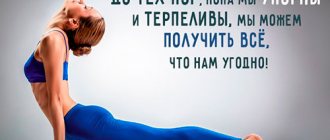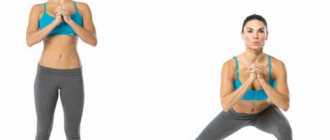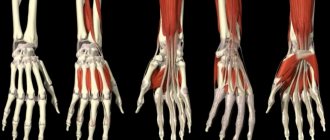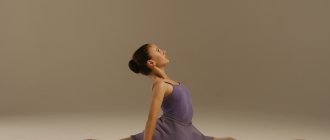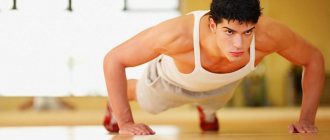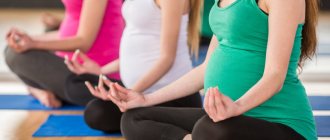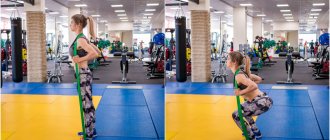Stretching is a type of fitness that is aimed at stretching muscles, strengthening ligaments and keeping the body toned.
Stretching can be used for completely different purposes. For example, explore new capabilities of your body, learn to relax after a hard day. Stretching helps you develop self-discipline and a love for exercise.
Stretching directly affects strength performance. In order for muscles to contract as much as possible during training, and quickly recover after it, stretching should become an integral part both before and after the training itself.
Stretching helps relieve joint pain and strengthens the back muscles to withstand everyday stress. Stretching exercises for stretching the whole body with videos are presented in large quantities on the Internet: there are lessons for beginners and athletes, for recovery from injuries, for the elderly.
Myths about stretching
- Pain is an integral part of stretching. For many, the main reason not to stretch is not the lack of results or time for exercise, but the feeling of sharp pain. From one point of view, everything is logical. The muscles are stretched, which is why it hurts. But is it necessary to endure pain? It is important to understand that pain is a natural reaction of the nervous system to traumatic actions. If you feel a sharp pain while doing an exercise, this means that you are about to stretch or tear something ;
- Stretching lengthens muscles and tendons. The length can only change under very strong mechanical stress. But we are not talking about intentionally inflicted injuries, but about increasing the plasticity of the tissue, its ability to secure a new shape. Stretching exercises do not lengthen muscles and tendons, but make them tolerant of strong stretching forces;
- Stretching burns fat. Stretching improves metabolism, which is a prerequisite for losing weight. When blood circulation is activated, body tissues receive more nutrients. Stretching makes the muscles more prominent by receiving important elements and “pumps” them faster. Stretching itself will not help burn fat, but if you stretch after a workout, it will enhance the fat burning effect.
Basic recommendations for stretching for beginners
Beginners should not stretch aggressively in a ballistic or dynamic style. Dynamic elements are allowed, but they must be performed in an anatomically natural plane and under control. For example, you shouldn’t “push” yourself into a cross split on the floor; you can only spring a little in a position where your legs against the wall are raised up and spread to the sides.
Important: beginners must follow a simple rule - stretching is performed either after training or after a thorough warm-up. When warming up, you should gently raise your heart rate with simple aerobic exercises, and then perform a series of movements that involve the whole body. Universal warm-up – abdominal exercises, push-ups and squats.
Recommendations for beginners:
- Don't start with the splits . This is great and impressive, of course, but you can easily get injured. If the goal is a cross split, first stretch the adductor and abductor muscles of the hips, as well as the back of the legs, then stretch the legs raised upward for a while. Gradually, from workout to workout, you can move on to smooth stretching into the splits. But usually you need to devote 3 months to this work to see serious progress. For many people, the cross split is technically simpler; it requires good stretching of the back and front of the thighs, and this is what you need to concentrate on;
- The back muscles are the most underrated group when it comes to stretching. Not only “cat and dog” exercises, but also reverse backbends should be in the program. A training program supplemented with good back stretching is more effective than a plan that only stretches the legs and arms. There is an opinion that it is easier for a person whose back is flexible and mobile to do the splits than for someone who does not have the ability to bend their back;
- Warm up efficiently – you don’t need to do even simple stretches without a preliminary warm-up. And they do not replace warm-ups in themselves. Stretching helps to get rid of muscle tension and spasms only under one condition - a person does not stretch on cold muscles;
- The presence of severe pain , especially in a joint, ligament, or muscle, is a signal to stop the stretching exercise. Discomfort and a slight feeling of resistance are normal, severe pain is not. You need to stretch gently, not aggressively, and not exceed the body’s capabilities in order to achieve results without “kickbacks” due to injuries;
- There is no need to stretch while holding your breath , perform bodyflex exercises or other gymnastics with holding your breath if the body is not ready for this. Hypoxia has a bad effect on the elasticity of muscle fibers and only the human body can “forgive” this if it does not stretch too deeply or does not hold its breath for long;
- copying other practitioners , the competitive spirit and other joys of social life during joint training to those who have been training for a long time. You need to stretch your muscles, listening to your own feelings, and not force things;
- Sliding , stretching “minus”, placing pieces of fabric under your feet to glide better are also bad ideas when it comes to fitness beginners. It is worth working only with your own body until the flexibility and mobility of the joints improves and the muscles become more elastic
There is an opinion that everyone should do stretching classes. It is based on the popularity and accessibility of yoga. In fact, stretching is contraindicated throughout the recovery period after injuries, during exacerbation of hypertension, heart rhythm disturbances, during pregnancy, if there is a risk of placental abruption, and during exacerbation of chronic diseases. The wrong choice is to replace training with stretching if you have a cold or need to reduce the intensity of the activity.
How to Do the Splits in 30 Days (10 MINUTES A DAY)
Features of stretching
Stretching can be done either in groups with a trainer or independently. The main thing is to learn the correct technique for performing all exercises and not get injured. To do this, you need to remember a few rules.
- The purpose of the warm-up is to prepare the joints and muscles. A high-quality warm-up will help not only reduce the risk of injury, but also make the stretching itself painless and comfortable;
- Breathing affects the muscles' access to nutrients and oxygen. When you hold your breath, muscle tension increases, which definitely cannot be useful during stretching;
- Regularity . It is much better to spend about 20 minutes stretching every day rather than spend an hour several times a week hoping for instant results. Intensity without regularity results in slower progress;
- Don't overload or overstretch the same muscle group. “Clogged” muscles will, on the contrary, return to their original shape.
Why do you need to stretch?
Stretching is not a separate sport, despite the fact that it resembles yoga, but an integral component of any activity, be it athletics, fitness, tennis, or especially dancing. Stretching is especially necessary for people who are far from such activity, because with a sedentary lifestyle, the elasticity of muscles, ligaments and joints is lost even more rapidly. As we age, we all become less flexible and graceful, and the risk of injury during sports increases. And only stretching can keep all the muscles of the body toned. Therefore, stretching today is an incredibly popular activity, both in special studios and among home athletes. Regular stretching is simply necessary for those who dance, build the muscles of their body, or dream of improving their results in their favorite sport.
Stretching brings incredible benefits to the entire body, preventing salt deposits, the development of varicose veins, obesity and other major ills of our century.
Plus, stretching can improve blood circulation, oxygen flow to the brain through proper breathing, and give a feeling of calm after a busy day at work.
Types of stretching
- Static stretching. The essence of static stretching is to stay in a position for a period of 30 to 60 seconds;
- Passive stretching. Very similar to static stretching, only performed with a trainer;
- Dynamic stretching. Stretching that occurs in motion;
- Ballistic stretch. All exercises are based on the principle of inertia and stretching occurs in the process of sudden jumps and swings;
- Active isolated stretching. In this technique, each muscle is worked separately, isolated from others;
- Isometric stretching. Relaxation occurs after tension - the main principle of isometric stretching. Contraction of muscle tissue suppresses the protective stretch reflex.
Why do you need stretching?
In short, stretching is the only chance for the body to compensate for all the overloads and axial loads that we experience during strength work and everyday activity. Only during stretching do the joints not experience compression, which is the best prevention of inflammation. In addition, stretching improves mobility in everyday life and relieves pain.
The advantages of stretching are:
- Relieves muscle stiffness, gives the opportunity to move freely;
- Helps with plasticity and grace even for those who have obvious problems;
- Improves mobility in joints;
- Helps you perform strength exercises with the correct technique;
- Provides muscles with blood and oxygen for recovery;
- Relaxes the central nervous system;
- Strengthens ligaments and neuromuscular connections;
- Works with coordination of movements;
- Helps you move more smoothly and accurately in dance and martial arts;
- Corrects postural imbalances
A set of stretching exercises for all muscle groups at home
- Neck. Stand up straight and place your right hand on your forehead. Tilt your head back, then towards your right shoulder.
- Shoulders. Press your right hand to your left shoulder, and with your left hand press your right hand at the elbow. Change hands and do the exercise again.
- Breast. Stand next to a doorway with one foot in front of the other. With your left hand, rest against the opening, bend at an angle of 90 degrees. Transfer your body weight to your hand and lean forward slightly. Keep your back straight and turn your head in the opposite direction to increase the load. Stay in this position for 30 seconds, then change your hand and perform exercises on the other side.
- Biceps. Stand next to the doorway, grasp the doorframe with one hand at shoulder level. Do not unclench your hand and twist your arm so as to turn your biceps upward. The rotation of the arm should occur around its axis, and not around the shoulder. Repeat the exercise.
- Triceps. Stand up, place one hand behind your head, and clasp your elbow with your free hand. Reach your hand towards your head. Stay in this position for a while, and then repeat the exercise with the other hand.
- Gluteal muscles. Lie on your back with your left knee bent and your right ankle on top of your knee. Wrap your hands around the back of your left thigh and pull your legs toward your chest. Place your right elbow inside your right knee. Repeat the exercise with the other leg.
- Outer thigh. Sit on the floor and straighten one leg straight in front of you. Bend the other leg at the knee, crossing it with the straightened leg so that the foot of the bent leg rests flat on the floor. Grasp the knee of the bent leg with the elbow of the opposite hand. Straighten your chest and turn your body as much as possible. Hold the position for 20 seconds. Repeat the exercise on the other side.
- Hamstring. Take a sitting position with your leg extended out to the side. Don't bend your knee and reach your palm toward the base of your foot. Pull your thumb towards you. Maintain this position for 20 seconds and alternate legs.
- Quadriceps. Bend your leg at the knee, clasping your shin with your hand. Stretch your heel as close to your buttocks as possible. Hold for 40 seconds, change legs and repeat the exercise.
- Caviar. Step one leg forward. Bend your knees without lifting your heels. Feel the tension in the back of your calves. Hold for 10 seconds, then change legs.
- Upper back. Take a sitting position with your hands behind your head. Arch your spine, tilting your head forward. Bend over until your elbows touch your hips. Hold this position for 10 seconds, then repeat the exercise five more times.
- Lower back. Take a lying position, pulling your knees to your chest. Wrap your hands around your knees and slowly pull your knees towards your shoulders.
Stretching and flexibility training program
By improving your flexibility, you will improve your athletic performance. If you have an inactive lifestyle, then by stretching you will significantly improve your physical condition and speed up your metabolism. To improve your progress in stretching, perform it not only before and after training, but also as a separate complex:
- Start the complex from the neck: Perform 4-5 head rotations in both directions while standing.
- Perform head turns 4-5 times in each direction.
- Touch your chin to your chest, then lift your chin up 4-5 times.
- Spread your hands to the sides, clench them into fists and perform rotational movements with your fists in different directions several times
- Stretch your arms and shoulders against the wall by pressing your hands against the wall and arching your back down. Repeat 2-3 times for 10 seconds.
- Perform cross forward leg raises 10–15 times with each leg in 2–3 approaches.
A set of stretching exercises for all muscle groups at home
- Child's pose. Take a sitting position, kneel down. Feet hip-width apart. Move your pelvis back and lower your buttocks onto your heels. Place your hands on the floor, stretching forward. Lower your head to the floor. Relax your body and hold the pose for as long as possible.
- Runner's lunges. From the starting position, lunge forward with one leg. Hold this position, then straighten your front leg. Pull the toe of your front foot towards you.
- Seated crunches. Sit on the floor, keep your legs straight. Bend your right knee and cross your right leg behind your left. Place your left elbow on your right knee and gently stretch. Hold for 30 seconds, return to the starting position. Repeat the exercise on the other side.
- Leg spread. Take a lying position. Stretch your arms along the body, throw your legs up perpendicular to the body. As you inhale, spread your legs apart, do not bend your knees. Fix at a comfortable point, but feel the tension. As you exhale, return to the starting position. Perform 3 sets of 20 repetitions.
- Four twist. Place your right foot on your left knee, bending your legs into a figure 4 shape. Next, you should grab your left leg with your hands and pull it closer to your chest. Keep your right knee bent to the right. Hold for 5 deep breaths and switch sides.
- Bend forward. Stand up straight with your feet shoulder-width apart and your back straight. Tighten your abs and lower your body down, rotating at the hip joints. Hold at the bottom for a couple of seconds and return to the starting position.
- Cow's head. Sit on your buttocks and bend your knees. Place your left foot under your right knee and place it to the right of your pelvis. Bring your right foot behind your left knee and place it on the floor to the left side of your pelvis. Place your knees one above the other. Raise your torso with your arms straight, distributing your body weight evenly across both sit bones. Place your right hand behind your back through the top and your left hand through the bottom, clasping your palms. Maintain the position for 30-60 seconds, then change hands and repeat the exercise.
- Satisfied child. Lie on your back. As you exhale, pull your knees towards your stomach. As you inhale, grab the outer sides of your feet with your hands. Spread your knees and pull towards your armpits. Keep your ankles over your knees so that your shins are perpendicular to the floor. Bend your heels. Press your feet on your hands and your hands on your heels. Rock from side to side. Hold the position for 30 seconds.
Neck stretching exercises
Tilt of the head back and to the side
Tilt your head back, stretching the front of your neck. From this position, tilt your head to the left. For greater effect, place your left palm on the right side of your head, but do not press hard.
Repeat the exercise on the other side.
Head tilt forward and sideways
Place your right hand on the left side of your head. Tilt your head forward and to the side, increase the pressure with your hand.
Repeat on the other side.
Back of the neck stretch
Place one hand on the back of your head and the other on your chin. Lower your head, making a double chin. At the same time, the neck remains straight, the back of the head tends upward. You should feel tension in the back of your neck, especially at the base of your skull.
Twine exercises
- Sit on the floor and bring your legs together. Perform 12 forward bends;
- Sit on the floor and spread your legs to the sides. Perform 12 forward bends;
- Sit on the floor. Extend your left leg, bend your right knee and press your foot toward your left thigh. Bend forward 8 times to your left leg, then change the position of your legs;
- Sit on the floor. Stretch your left leg, bend your right leg and move it back. Bend forward 12 times and change legs;
- Sit on the floor. Interlace your legs into a “lotus” and perform 12 forward bends;
- Sit on the floor. Bring your feet together, then use your elbows to spread your legs apart. Perform 16 times.
Shoulder stretches
Front Shoulder Stretch
Place your hands behind your back, clasp your wrist with one hand and the other. Bend your elbows and lift your wrists higher. Push your chest forward and feel the stretch in the front of your shoulders.
Mid Shoulder Stretch
Grab your opposite elbow with your hand, press your shoulder towards you and pull it down. Repeat with the other hand.
Back Shoulder Stretch
Grasp your right arm with your left above the elbow, press it to your body and straighten it, lower your right shoulder down. With your left hand, pull your right hand up, lifting it with your elbow. Feel the tension in the back of your shoulders.
Repeat with the other hand.
Triceps stretch
Go to the wall, lift your left elbow up, and place your forearm behind your back. Lower your left shoulder blade down. To check that it has actually dropped and will not rise during the stretch, place your right hand below your left armpit.
Repeat on the other side.
Biceps stretch
Grab a doorknob, counter, or other support and turn your back to it. Turn your elbow upward and move your body slightly forward.
Repeat with the other hand.
Triceps and Shoulder Stretch
This pose allows you to simultaneously stretch the triceps of one arm and the front of the shoulder of the other. Place one hand behind your back from above so that your elbow points upward, and the other from below so that your elbow points to the floor. Try to bring your wrists together behind your back at the level of your shoulder blades.
Switch hands.
Wrist Extensor Stretch
Sit on your knees, place your hands in front of you so that the backs of your hands touch the floor and your fingers point towards each other. Gently shift your weight into your hands, stretching your forearms. To enhance the effect, try clenching your fists.
How to stretch correctly
Before you tell us what stretching exercises there are, read what you need to keep in mind so as not to harm yourself:
- Warm-up - you can’t go anywhere without it, and don’t even think that you can be free here. Read more about warm-up exercises here.
- Work incrementally to strengthen the result.
- Think about what you are doing so as not to miss any important muscles. You need to know which muscles are involved during a particular stretching exercise.
- Safety is everything. If you feel a sharp, unpleasant pain while performing movements, you need to stop and correct your technique.
Exercises to stretch the front of the thigh
Lying quadriceps stretch
Lie on the floor on your stomach, lift one leg and place your hand on your ankle. Pull your leg towards your buttock, trying not to lift your thigh off the floor. Repeat with the other leg.
Single Knee Quadriceps Stretch
Get down on one knee, grab the toe of your back leg with your hand and pull your heel towards your buttock. Squeeze your gluteal muscles: this will deepen the stretch. Repeat with the other leg.
Hip flexor stretch
Get on one knee with both legs bent at a 90-degree angle. The back is straight. Tighten your gluteal muscles and move your pelvis slightly forward. You should feel tension in the front of your back leg and in your groin.
Switch legs.
Deep Lunge
Take a deep lunge forward. Place your fingers on the floor on either side of your foot. Lower the knee of the straightened leg to the floor. Try to go lower and do not turn your pelvis to the side.
Switch legs.
Inner Thigh Stretching Exercises
Deep squat
Stand next to a rack or machine that you can hold on to. Feet shoulder-width apart, toes and knees turned outward. Lower yourself into a deep squat, keeping your back straight.
Butterfly near the wall
Sit on the floor with your back straight, fold your legs in front of you with your feet facing each other. Try to lower your knees to the floor, but do not put pressure on them with your hands. Keep your back straight.
Frog
Lie on the floor on your stomach, spread your knees to the sides and bend your legs at a right angle. Try to place your pelvis on the floor.
Frog with straight leg
Lie on the floor on your stomach, spread your knees out to the sides so that your thighs are parallel to the floor. Bend one leg at the knee, straighten the other. Try to place your pelvis on the floor. Repeat with the other leg.
Forward fold
Sit on the floor, spread your straight legs wider, and then lean forward. Try to lie on your stomach on the floor, do not bend your knees.
Cross twine
vova130555/ru.depositphotos.com
Split into a cross split. Do not move your pelvis too far back; ideally it should be in line with your knees and feet. Place your palms on the floor, and if stretching allows, your forearms. Pull your pelvis down towards the floor.
Stretching next to the wall
Lie on the floor close to the wall. The body should be perpendicular to it. Spread your legs and let them slowly lower under your weight. Stay in this position for 5–10 minutes.
Exercises for stretching the buttocks
Lying stretch
Lie on the floor on your back, raise your knees bent. Place the ankle of your left foot on the knee of your right. Press the knee of your right leg onto your left to deepen the stretch. Repeat with the other leg.
Stretch on all fours
Get on all fours, place your right ankle on your left knee. Push your pelvis back to deepen the stretch. Repeat with the other leg.
Stretching while sitting
Sit on the floor, stretch your legs forward, straighten your back. Bend one leg at the knee, grab your shin with your hands and press it to your chest. The shin should be parallel to the floor, the forearms lie on top and press it to the chest, one hand covers the other.
Repeat with the other leg.
Pigeon pose
Sit on the floor, bend one leg at the knee at a right angle and move it forward, take the other back and straighten it. You can lean forward and place your forearms on the floor.
If you have difficulty doing this pose on the floor, try placing your foot on an elevated platform.
Abdominal stretching exercises
Camel Pose
Get on your knees, push your chest up, lengthening your spine, and then lean back, placing your hands on your heels. Try to bend in the thoracic region. Don't throw your head back, look up.
Upward-facing dog pose
Lie on the floor on your stomach, place your hands under your shoulders. Push yourself up, your pelvis rises, your legs remain on the floor. Lower your shoulders, bend in the chest.
Standing Backbend
Stand straight with your feet together. Raise your arms and join your palms above your head. Bend your chest and tilt your body back. Tighten your buttocks to prevent a strong arch in your lower back.
Side tilt
Stand up straight, raise your arms above your head, clasp your fingers and turn your palms up. Stretch up and bend first to one side and then to the other.
Lying spinal twist
Lie on the floor on your back, arms out to the sides, palms down. Move your pelvis to the left, lift your left leg, bending it at the knee, move it behind your right leg and try to place your knee on the floor. Turn your head to the left and relax.
Repeat the exercise on the other side.
